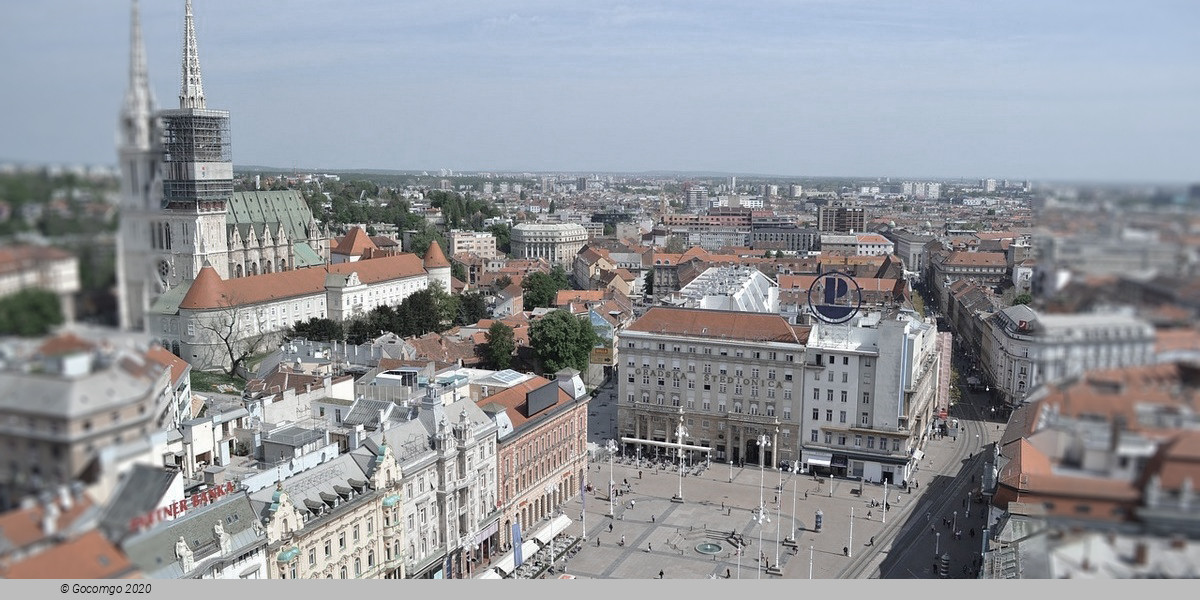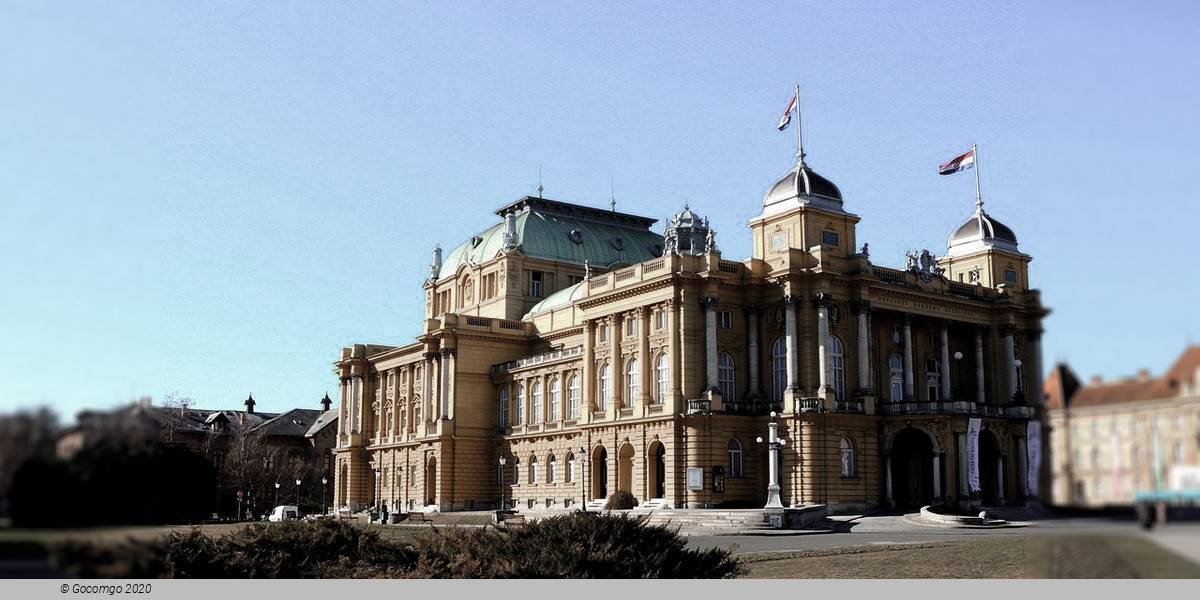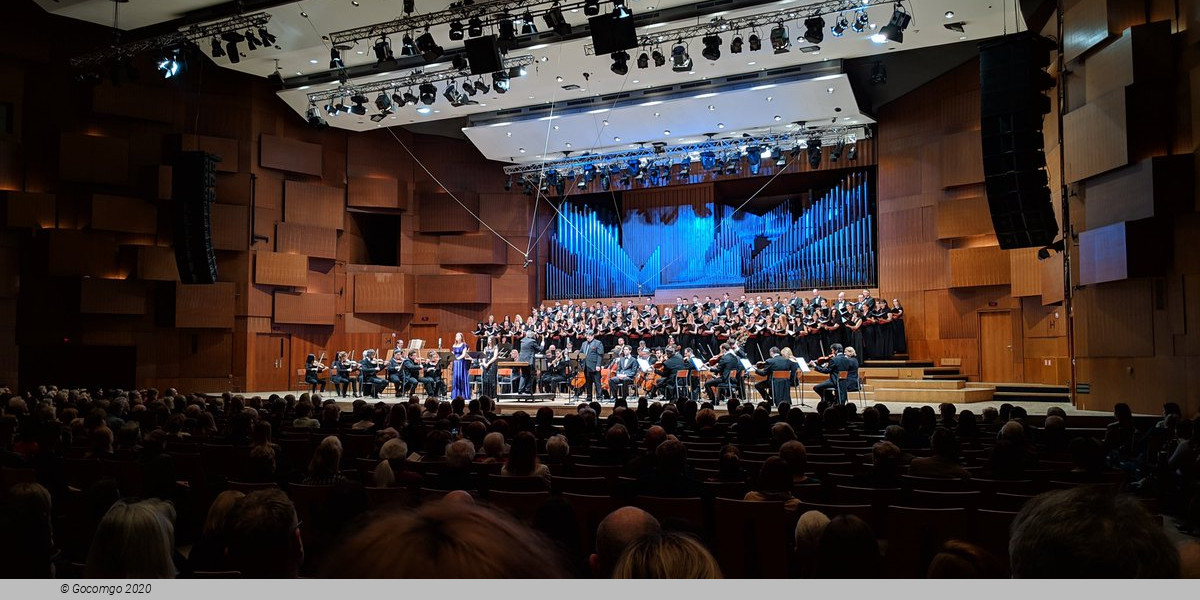Venues in Zagreb

Zagreb is the capital and largest city of Croatia. It is in the northwest of the country, along the Sava river, at the southern slopes of the Medvednica mountain. Zagreb lies at an elevation of approximately 122 m (400 ft) above sea level. Zagreb is a city with a rich history dating from Roman times. The oldest settlement in the vicinity of the city was the Roman Andautonia, in today's Ščitarjevo. The name "Zagreb" is recorded in 1134, in reference to the foundation of the settlement at Kaptol in 1094. Zagreb became a free royal city in 1242. In 1851 Zagreb had its first mayor, Janko Kamauf.
History
The oldest settlement located near today's Zagreb was a Roman town of Andautonia, now Šćitarjevo, which existed between the 1st and the 5th century AD. The first recorded appearance of the name Zagreb is dated to 1094, at which time the city existed as two different city centers: the smaller, eastern Kaptol, inhabited mainly by clergy and housing Zagreb Cathedral, and the larger, western Gradec, inhabited mainly by craftsmen and merchants. Gradec and Kaptol were united in 1851 by ban Josip Jelačić, who was credited for this, with the naming the main city square, Ban Jelačić Square in his honor.
During the period of former Yugoslavia, Zagreb remained an important economic centre of the country, and was the second largest city. After Croatia declared independence from Yugoslavia, Zagreb was proclaimed its capital.
Early Zagreb
The history of Zagreb dates as far back as 1094 A.D. when the Hungarian King Ladislaus, returning from his campaign against Croatia, founded a diocese. Alongside the bishop's see, the canonical settlement Kaptol developed north of Zagreb Cathedral, as did the fortified settlement Gradec on the neighbouring hill; the border between the two being the Medveščak stream. Today the latter is Zagreb's Upper Town (Gornji Grad) and is one of the best preserved urban nuclei in Croatia. Both settlements came under Tatar attack in 1242. As a sign of gratitude for offering him a safe haven from the Tatars the Croatian and Hungarian King Bela IV bestowed Gradec with a Golden Bull, which offered its citizens exemption from county rule and autonomy, as well as its own judicial system.
16th to 18th centuries
There were numerous connections between the Kaptol diocese and the free sovereign town of Gradec for both economic and political reasons, but they weren't known as an integrated city, even as Zagreb became the political center and, representing both Croatia, Slavonia and Dalmatia, first convened at Gradec. Zagreb was chosen as the seat of the Ban of Croatia in 1621 under ban Nikola Frankopan.
At the invitation of the Croatian Parliament, the Jesuits came to Zagreb and built the first grammar school, the St. Catherine's Church and monastery. In 1669, they founded an academy where philosophy, theology, and law were taught, the forerunner of today's University of Zagreb.
During the 17th and 18th centuries, Zagreb was badly devastated by fire and the plague. In 1776, the royal council (government) moved from Varaždin to Zagreb and during the reign of Joseph II Zagreb became the headquarters of the Varaždin and Karlovac general command.
19th to mid-20th century
In the 19th century, Zagreb was the center of the Croatian National Revival and saw the erection of important cultural and historic institutions. In 1850, the town was united under its first mayor – Janko Kamauf.
The first railway line to connect Zagreb with Zidani Most and Sisak was opened in 1862 and in 1863 Zagreb received a gasworks. The Zagreb waterworks was opened in 1878.
After the 1880 Zagreb earthquake, up to the 1914 outbreak of World War I, development flourished and the town received the characteristic layout which it has today. The first horse-drawn tram was used in 1891. The construction of the railway lines enabled the old suburbs to merge gradually into Donji Grad, characterized by a regular block pattern that prevails in Central European cities. This bustling core hosts many imposing buildings, monuments, and parks as well as a multitude of museums, theatres, and cinemas. An electric power plant was built in 1907.
Since 1 January 1877, the Grič cannon is fired daily from the Lotrščak Tower on Grič to mark midday.
The first half of the 20th century saw a considerable expansion of Zagreb. Before World War I, the city expanded and neighborhoods like Stara Peščenica in the east and Črnomerec in the west were created. After the war, working-class districts such as Trnje emerged between the railway and the Sava, whereas the construction of residential districts on the hills of the southern slopes of Medvednica was completed between the two World Wars.
In the 1920s, the population of Zagreb increased by 70 percent – the largest demographic boom in the history of the town. In 1926, the first radio station in the region began broadcasting from Zagreb, and in 1947 the Zagreb Fair was opened.
During World War II, Zagreb became the capital of the Independent State of Croatia, which was backed by Nazi Germany and the Italians. The history of Zagreb in World War II became rife with incidents of regime terror and resistance sabotage, and the Ustaša regime had thousands of people executed during the war in and near the city. The city was taken by the Partisans at the end of the war. From 1945 until 1990, Zagreb was the capital of the Socialist Republic of Croatia, one of the six constituent socialist republics of the Socialist Federal Republic of Yugoslavia.
Modern Zagreb
The area between the railway and the Sava river witnessed a new construction boom after World War II. After the mid-1950s, construction of new residential areas south of the Sava river began, resulting in Novi Zagreb (Croatian for New Zagreb), originally called "Južni Zagreb" (Southern Zagreb). Today Novi Zagreb is divided in two city districts: Novi Zagreb-zapad (West Novi Zagreb) and Novi Zagreb-istok (East Novi Zagreb)
The city also expanded westward and eastward, incorporating Dubrava, Podsused, Jarun, Blato, and other settlements. The cargo railway hub and the international airport Pleso were built south of the Sava river. The largest industrial zone (Žitnjak) in the south-eastern part of the city represents an extension of the industrial zones on the eastern outskirts of the city, between the Sava and the Prigorje region. Zagreb also hosted the Summer Universiade in 1987.
During the 1991–1995 Croatian War of Independence, it was a scene of some sporadic fighting surrounding its JNA army barracks, but escaped major damage. In May 1995, it was targeted by Serb rocket artillery in two rocket attacks which killed seven civilians and wounded many.
An urbanized area connects Zagreb with the surrounding towns of Zaprešić, Samobor, Dugo Selo, and Velika Gorica. Sesvete was the first and the closest area to become a part of the agglomeration and is already included in the City of Zagreb for administrative purposes and now forms the easternmost city district.
In 2020 the city was hit by a 5.5 magnitude earthquake. Various buildings in the historic downtown area were damaged. The city's iconic cathedral lost the cross off of one of its towers. This earthquake was the strongest one to affect the city since the destructive 1880 Zagreb earthquake.



